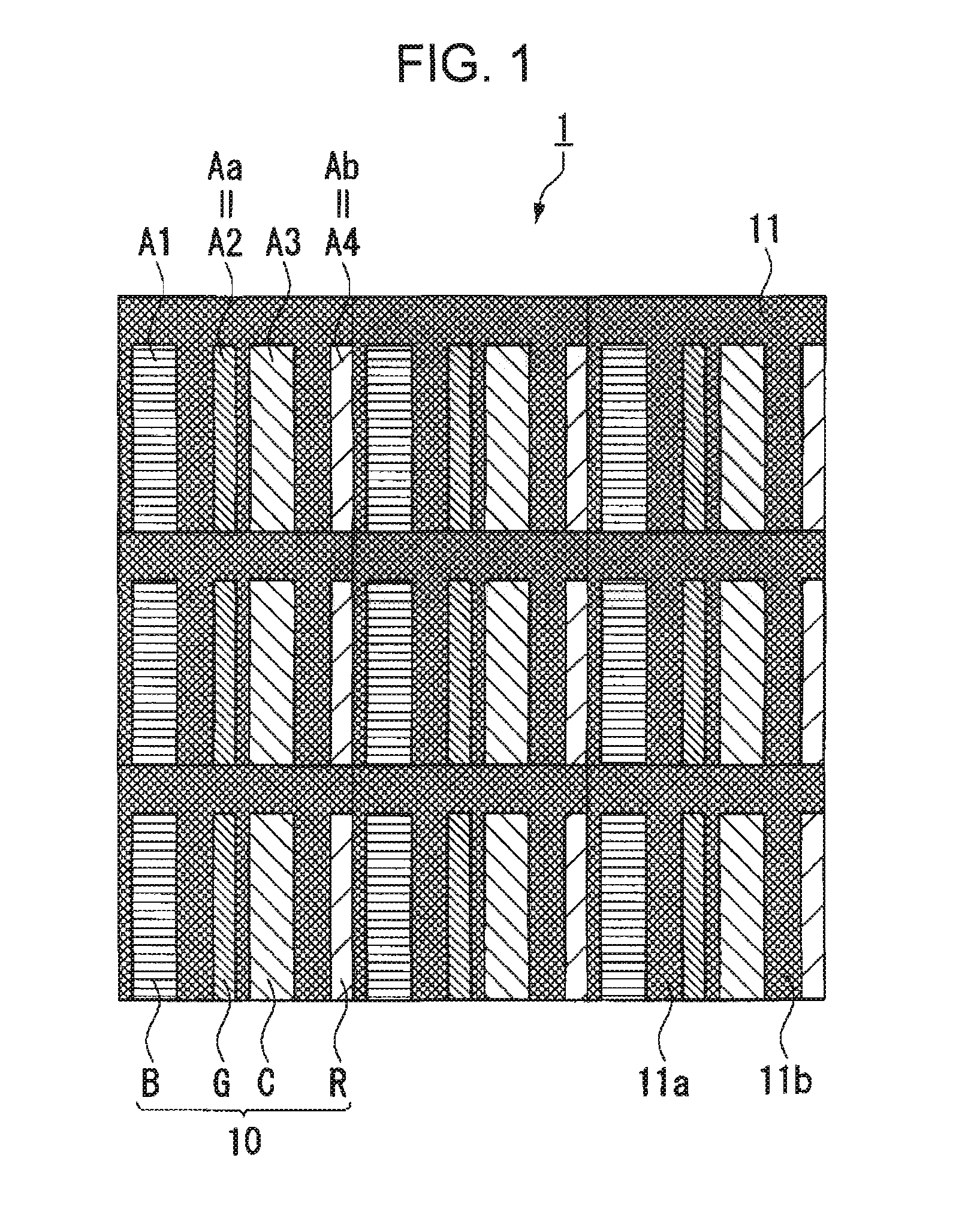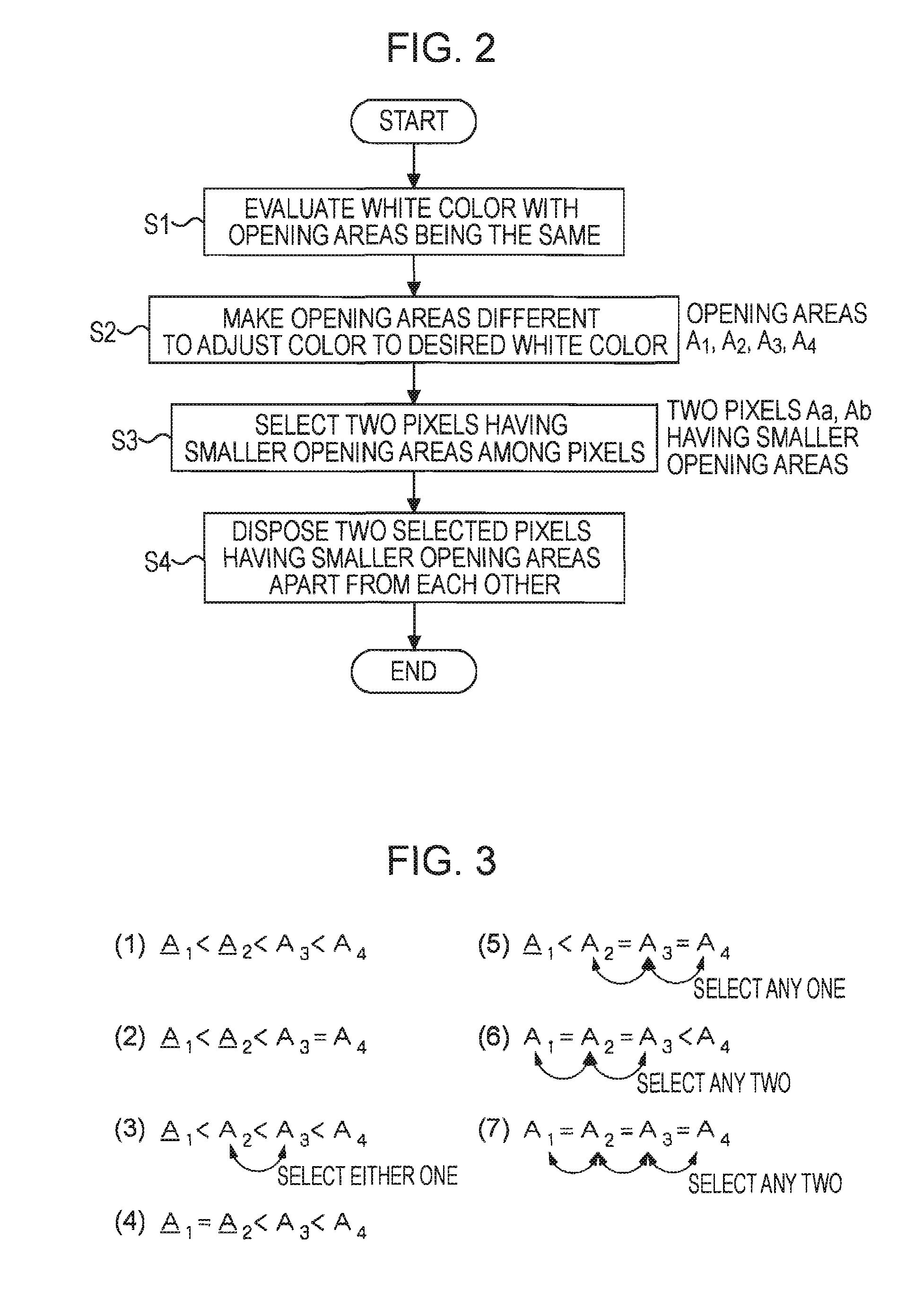Display device, method of disposing pixels, and pixel disposition program
a technology of a display device and a pixel disposition program, which is applied in the field of display devices, can solve the problems of deteriorating image quality, unable to consider any technology for a four-color display device, and the color reproduction area cannot be sufficiently widen as an actual manufactured display device, so as to reduce vertical black lines, and high precision
- Summary
- Abstract
- Description
- Claims
- Application Information
AI Technical Summary
Benefits of technology
Problems solved by technology
Method used
Image
Examples
first embodiment
[0045]FIG. 1 is a plan view of a main portion of a display device according to a first embodiment of the invention. That is, FIG. 1 shows a plane configuration of pixels in a display device 1 according to the embodiment. The display device 1 performs a color displaying operation by synthesizing four colors. More specifically, the display device 1 comprises a blue hue colored area (B; a first sub-pixel), a red hue colored area (R; a second sub-pixel), and colored areas of two types of hues (C; a third sub-pixel and D; a fourth sub-pixel) that are selected from a hue range of from a blue hue to a yellow hue. These colored areas are included in a visible light region (380 nm to 780 nm) whose hue changes with wavelength.
[0046] Here, the term “type” is used. For example, a blue-type hue is not limited to a pure-blue hue, so that it includes a blue-violet hue and a blue-green hue. A red-type hue is not limited to a red hue, so that it includes an orange hue. Each of the colored areas may...
second embodiment
[0072]FIG. 4 is a plan view of a main portion of a display device according to a second embodiment of the invention. That is, FIG. 4 shows a plane configuration of pixels in a display device 2 according to the second embodiment. Similarly to the display device 1 according to the first embodiment, the display device 2 performs a color displaying operation by synthesizing four colors. The four colors, (R), (G), (B), and (C), are the same as those used in the first embodiment. However, the display device 2 according to the second embodiment differs from the display device 1 according to the first embodiment in that, for example, two pixels Ya and Yb having smaller luminances are selected from the pixels of the four colors and the pixels Ya and Yb having smaller luminances are disposed apart from each other.
[0073] More specifically, in the display device 2, four pixels (sub-pixels), an (R) pixel, a (G) pixel, a (B) pixel, and a (C) pixel, are defined as one pixel set 20, and a pluralit...
PUM
 Login to View More
Login to View More Abstract
Description
Claims
Application Information
 Login to View More
Login to View More - R&D
- Intellectual Property
- Life Sciences
- Materials
- Tech Scout
- Unparalleled Data Quality
- Higher Quality Content
- 60% Fewer Hallucinations
Browse by: Latest US Patents, China's latest patents, Technical Efficacy Thesaurus, Application Domain, Technology Topic, Popular Technical Reports.
© 2025 PatSnap. All rights reserved.Legal|Privacy policy|Modern Slavery Act Transparency Statement|Sitemap|About US| Contact US: help@patsnap.com



